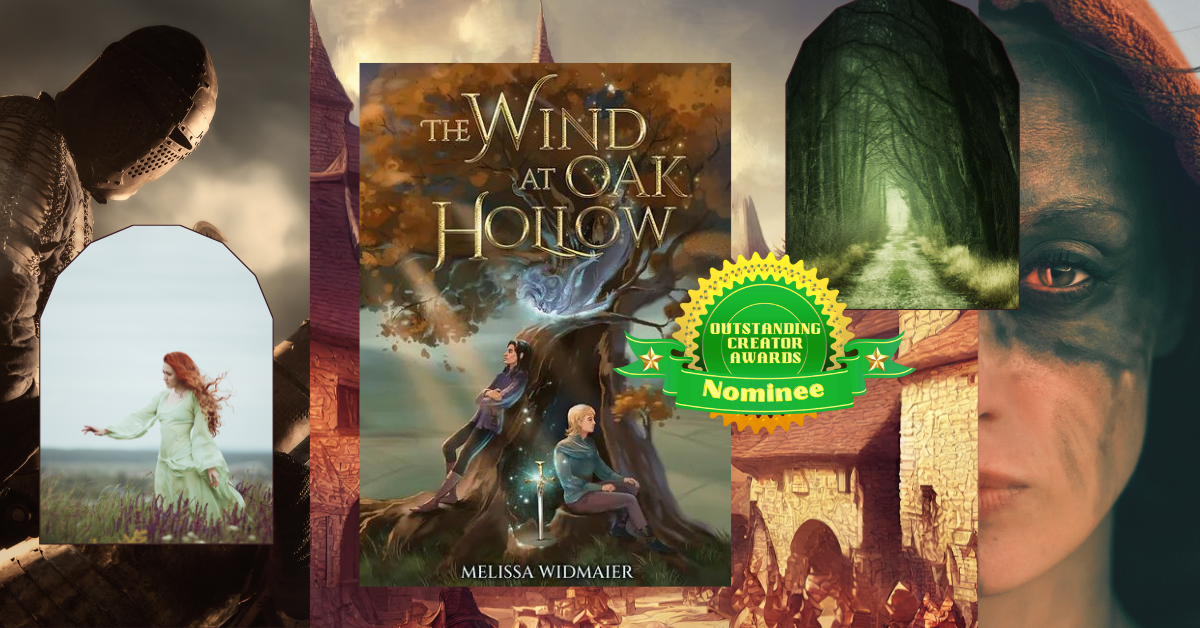|
Score: 91+/100 (9.1+ out of 10)
The Wind at Oak Hollow is an ambitious and complex fantasy novel filled with family drama, political intrigue, magic and the supernatural forces of nature itself. The novel follows the Ganwin family, members of a pagan-like Medieval tribe, who have been granted several blessings/curses by the Elements, the nature spirits. Namely, one of their sons, Marl, has been blessed as a healer. In turn, he is cursed by the possessive spirit, Wind, who stalks and haunts him constantly like an ex-wife or overly controlling mother-in-law. Their other son, Natsir, is favored by Water. Their mother, the priestess Messa, is favored by Earth. Para (Natsir's wife) and Hereu (Marl's wife) also play sizable roles in the story, surpassing their husbands in interest at times. The patriarch of the family, Nojhi, is initially seen as a farmer. However, it is strongly implied and later outright stated that he was a much different person in his previous life, a person of both great power and extreme cruelty. That darkness rears its ugly head from time to time as he is shown to be abusive at times to the boys at times. The book primarily centers on Marl, for better or for worse, who wrestles with his powers and his relationships with Wind, Natsir, Hereu, Messa, and Nojhi. None of these relationships is necessarily smooth. In particular, he is constantly on guard for how Wind will meddle with his life. Wind is simultaneously the coolest and creepiest character in the entire book! Wind comes across as a possessive, jealous ex-wife/girlfriend mixed with a mother going through empty nest syndrome. So she's kinda like Desirae from Perfectly Imperfect by Darlene Winston. Wind whispers or talks to Marl on and off via a method like telepathy (mind-speak). She also does things like slam doors or outright attack like she's Christine (the killer Cadillac). She's particularly jealous of Marl's relationship with Hereu, an Auburn-haired girl from Selcovi, which we gathered was like the capital city of the kingdom. So, this kinda becomes a city-girl-meets-village/farmer-boy story for a bit. Marl is identified as a prophesied figure known as the Wanderer, who, as you might guess, is supposed to bring balance to the universe, not leave it in darkness. In the meantime, Marl is a mischief maker who gets on the nerves of the poor, unfortunate townspeople of Na'ir. They tolerate his antics only in so far as it keeps them on good terms with his hot-headed dad. It's strange, but we much preferred the female characters, Hereu and Para, over the male ones. We even enjoyed Messa more. The boys (who are actually almost 20, we think) talk and act like they're 12 or 14. They mope and whine. They get into childish school yard brawls, pretty much over the equivalent of your mama jokes. They get crushes and don't know what to do about those crushes. It's kinda... elementary. Hereu, Para, and Messa on the other hand, seem like real women who have things together. Like, we remember when Hereu was all for trying her best to build the house with what meager resources she had available. Also, like we said, Wind (also female) is far and away the coolest thing in this whole book. Maybe the author just writes women better? Anyway, this book excels in one key way: world-building. There is a lot of world-building on display in this book. We admired the way that the author was able to personify the three main elements as sisters similar to the Fates of Greek mythology, or how the sun and moon are referred to as “mother” and “father.” The vernacular and culture of the Erutani is very distinct, as is their history. Now, we will say that this book lacks focus. That is probably the most frustrating thing about it. There are about ten too many characters and ten too many things going on. For example, there's a side-plot in which Rippan kidnaps Para that happens deep into this book, long after a major thing like this should have happened. This side-plot seems to come out of left field and then quickly become a footnote. Rippan, by the way, is essentially Gaston from Beauty and the Beast. Meanwhile, Wind is out there being a crazy psycho-woman, Onaryc is over here about to declare war on the rest of the world, Captain Tyrc is emerging as a treacherous and needlessly petty bastard, Nojhi is trying to suppress the memories of his past as a ruthless jerk, Nat is wrestling with being a caterpillar boy, and Marl is wrestling with the fact that he's a healer and the fact that his new wife is so much cooler and more interesting than him. Sometimes we were seriously wondering: what is going on? What is the main idea? What is the main/central conflict? It's just too much for one novel. The human brain can only absorb and follow so much. Now, one thing we'll say is that this book is probably best treated like an anthology—a collection of loosely-related slice-of-life stories that revolve around the Ganwin family. Essentially, this is Little House on the Medieval Prairie (with magic). Not every episode leads to or relates to the next, but the central characters stay the same. In one episode, the Little Medieval House crew may be overcoming school bullies, in the next episode they may be coping with the death of their horse, and in the episode after that they're discovering that their father mutilated people and burned down villages. See, it makes a lot more sense that way. If Little House on the Medieval Prairie sounds like an interesting concept to you, check it out on Amazon!
0 Comments
Leave a Reply. |
Archives
July 2024
Categories |

 RSS Feed
RSS Feed